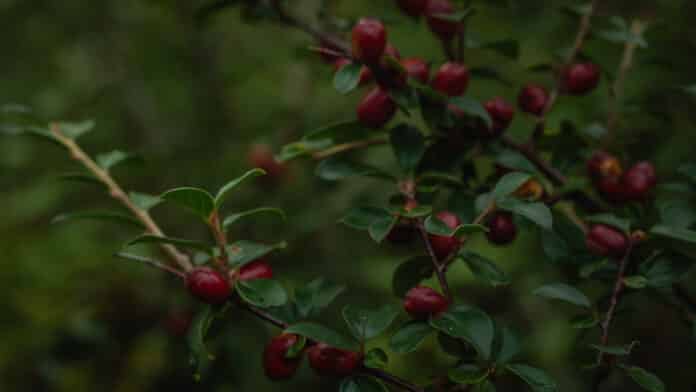Let’s figure out what communication is.
Effective communication goes beyond merely transmitting information; it’s about ensuring the message is received and understood as intended, fostering a mutual understanding between all parties involved.
Here we go:
What Communication Is (and Why It Matters)
Spin Academy | Online PR Courses
What Communication Is (and Why It Matters)
At its core, communication is the process of exchanging information between two or more parties. It can take various forms, including verbal, written, non-verbal, and digital.
Why does communication matter? Well, as opposed to information (one-way), communications (two-way) are the building blocks of relationships.
Communication:
Effective communication is not just about being heard; it’s about understanding, creating connections, and facilitating actions that drive positive outcomes.
“Modern organizational communication should be managed as a social integrator rather than a mechanistic management tool, requiring a specific concept of interpersonal communication.”
Source: Journal of Communication Management 1Varey, R. (1996). Conscious corporate communication: A conceptual analysis. Journal of Communication Management, 1, 134 – 144. https://doi.org/10.1108/EB026040
Learn more: What Communication Is (and Why It Matters)
💡 Subscribe and get a free ebook on how to get better PR ideas.

Shannon-Weaver Model of Communication

Spin Academy | Online PR Courses
The Shannon-Weaver Model of Communication
The Shannon-Weaver Model of Communication, also known as the Shannon-Weaver Theory, is a foundational concept in communication studies. Developed in 1948 by Claude Shannon and Warren Weaver, the model was initially created to improve technical communication, particularly for telephone and radio technologies. 2Shannon, C. E., & Weaver, W. (1949). The Mathematical Theory of Communication. Urbana: University of Illinois Press. 3Shannon – Weaver model. (2023, December 21). In Wikipedia. https://en.wikipedia.org/wiki/Shannon-Weaver_model
Claude Shannon: An American mathematician, electrical engineer, and cryptographer known as “the father of information theory.” Shannon’s work laid the groundwork for the digital revolution.
Warren Weaver: An American scientist, mathematician, and science administrator, Weaver collaborated with Shannon in articulating the communication model that extended its application beyond technical fields.
The Shannon-Weaver Model breaks down the process of communication into several components:
The Shannon-Weaver Model is significant for several reasons:
Learn more: The Shannon-Weaver Model of Communication
💡 Subscribe and get a free ebook on how to get better PR ideas.

Why Communication Is Important
Spin Academy | Online PR Courses
Why Communication Is Important
Strategic communication is the deliberate and purposeful exchange of information designed to achieve specific objectives. It involves careful planning, message tailoring, channel selection, and feedback mechanisms to ensure the intended message is received, understood, and acted upon effectively.
“Effective communication involves cognitive complexity and social perspective-taking, which are related to adapting persuasive messages to recipients.”
Source: Human Communication Research 4Clark, R., & Delia, J. (1977). Cognitive Complexity, Social Perspective-Taking, and Functional Persuasive Skills in Second- to Ninth-Grade Children. Human Communication Research, 3, 128 – 134. … Continue reading
Communication is pivotal across all levels and sectors of an organisation, from leadership to frontline employees, marketing to customer service, and internal operations to external relations.
Communication is not just about speaking or writing; it’s about connecting, understanding, and achieving together. That’s why communication is not just important; it’s imperative.
Learn more: Why Communication Is Important
💡 Subscribe and get a free ebook on how to get better PR ideas.

Communication Definition
Spin Academy | Online PR Courses
The Communication Definition
Based on the Shannon-Weaver Model of Communication, this is the definition of communication: 5Silfwer, J. (2022, February 18). The Shannon-Weaver Model of Communication. Doctor Spin | The PR Blog. https://doctorspin.net/shannon-weaver-model-of-communication/
Communication = the process of encoding a message by the information source, transmitting it through a selected channel, and ensuring it is decoded by the receiver to convey information or achieve understanding.
From a public relations (PR) perspective, the intentional dissemination of information to influence and persuade is added to the context, providing us with this definition of strategic communication:
Strategic Communication = the strategic process of encoding a tailored message by the information source, transmitting it through an optimal channel to effectively overcome noise, and ensuring it is accurately decoded by the receiver to achieve the desired impact on the destination.
As a stark reminder of the importance of context, and the fact that “no communication” also tells us something, PR professionals often repeat this popular mantra:
Learn more: Communication Definition
💡 Subscribe and get a free ebook on how to get better PR ideas.


Thanks for reading. Please support my blog by sharing articles with other communications and marketing professionals. You might also consider my PR services or speaking engagements.
PR Resource: Free Communication PR Course

Spin Academy | Online PR Courses
Doctor Spin’s PR School: Free Communication PR Course
Discover the power of effective communication in this free Communication PR Course. Explore now to elevate your public relations game — absolutely free!
Communication Skills
“The single biggest problem in communication is the illusion that it has taken place.”
— George Bernard Shaw
Learn more: All Free PR Courses
💡 Subscribe and get a free ebook on how to get better PR ideas.

ANNOTATIONS
| 1 | Varey, R. (1996). Conscious corporate communication: A conceptual analysis. Journal of Communication Management, 1, 134 – 144. https://doi.org/10.1108/EB026040 |
|---|---|
| 2 | Shannon, C. E., & Weaver, W. (1949). The Mathematical Theory of Communication. Urbana: University of Illinois Press. |
| 3 | Shannon – Weaver model. (2023, December 21). In Wikipedia. https://en.wikipedia.org/wiki/Shannon-Weaver_model |
| 4 | Clark, R., & Delia, J. (1977). Cognitive Complexity, Social Perspective-Taking, and Functional Persuasive Skills in Second- to Ninth-Grade Children. Human Communication Research, 3, 128 – 134. https://doi.org/10.1111/J.1468 – 2958.1977.TB00511.X |
| 5 | Silfwer, J. (2022, February 18). The Shannon-Weaver Model of Communication. Doctor Spin | The PR Blog. https://doctorspin.net/shannon-weaver-model-of-communication/ |



